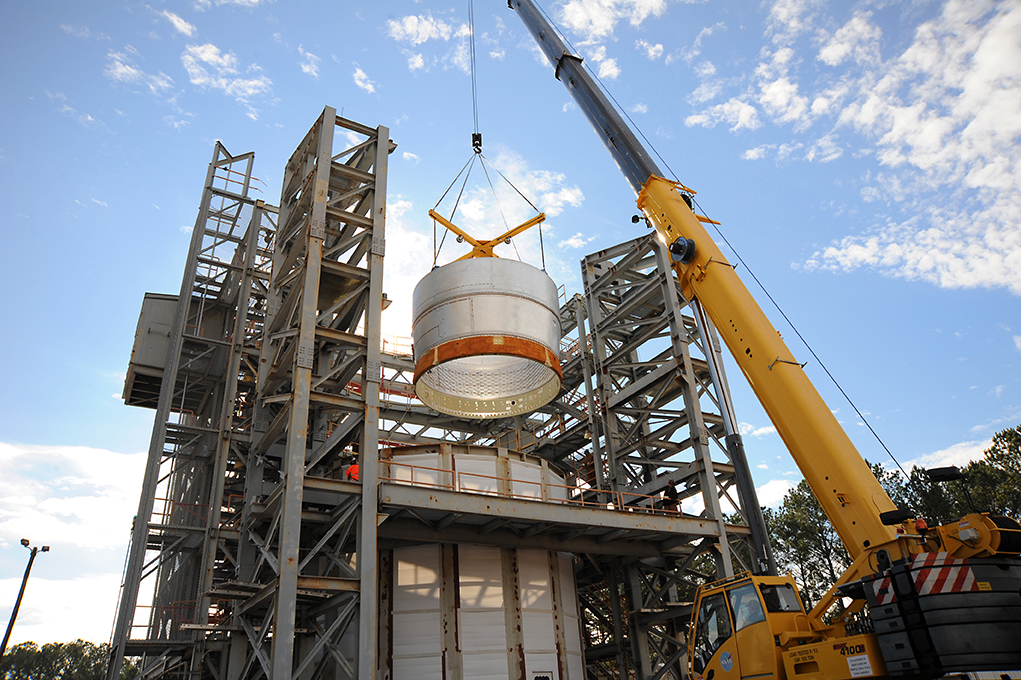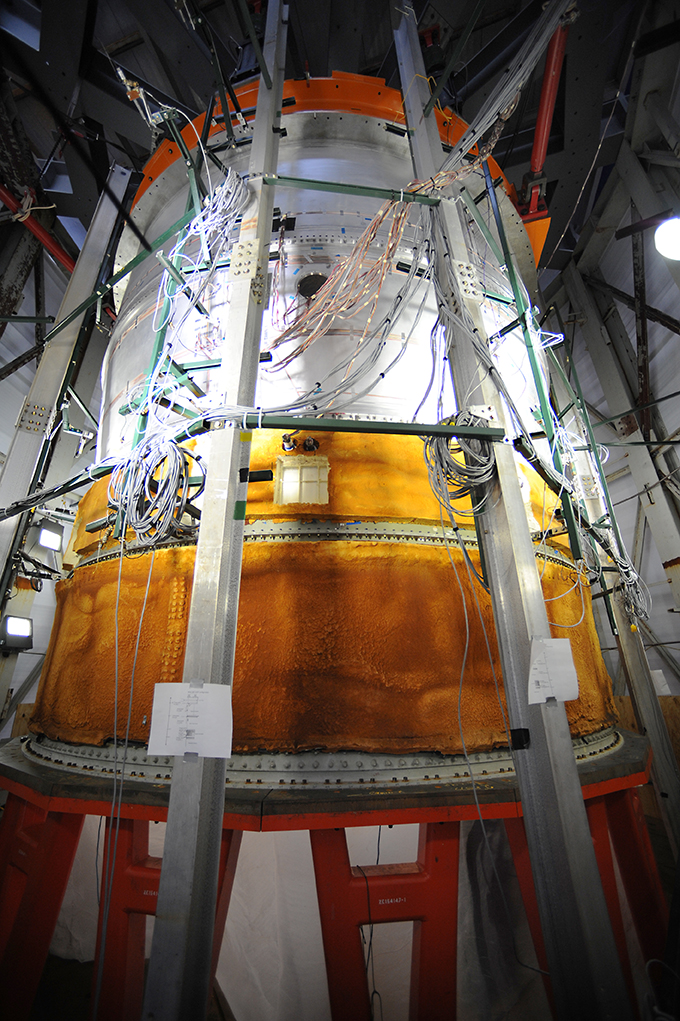A test article of the stage adapter that will connect the Orion spacecraft to a United Launch Alliance (ULA) Delta IV rocket for its first mission, Exploration Flight Test-1, aced structural loads testing Jan. 30. Now, the stage adapter that will fly on the Delta IV is officially ready for the journey to its final exam — a flight more than 15 times farther into deep space than the International Space Station.
For the structural loads test, the hardware was attached with lines running in different directions on the hardware. Hydraulic pressure was added to those lines in increments, which pushed on the adapter to evaluate its integrity. The test was similar to the recent “can-crush” tests on a rocket fuel tank, but the adapter wasn’t purposefully buckled for the structural test as it was on the fuel tank. Twenty-five test cases were completed on the adapter.
“The loads put on the adapter are similar to the conditions it will experience in flight,” said Brent Gaddes, Spacecraft & Payload Integration Adapter Subsystem manager at NASA’s Marshall Space Flight Center in Huntsville, Ala., where the test was conducted. “This test showed us the adapter can handle loads even higher than it will see in flight, without any compromise to the hardware — like bending or cracking.”
“It takes a lot of hard work from many different teams to pull a large-scale test like this together,” said Dee VanCleave, lead test engineer for the structural loads test at Marshall. “We were able to compare the test data with the stress-analysis predictions in real-time for immediate results.”
The flight adapter will be shipped in mid-March to ULA’s facility in Decatur, Ala., where the Delta IV is being constructed. From there, it will travel by ship to Cape Canaveral, Fla., ahead of Orion’s inaugural flight in September.
During the mission, Orion will travel approximately 3,600 miles above Earth’s surface before re-entering the atmosphere at almost 20,000 mph, generating temperatures near 4,000 degree Fahrenheit. The uncrewed flight will provide engineers with important data about Orion’s heat shield and other elements, including the adapter’s performance, before it is flown in 2017 as part of the first mission to include the Space Launch System, or SLS.
SLS will be capable of powering humans and potential science payloads to deep space. It has the greatest capacity of any launch system ever built, minimizing the cost and risk of deep space journeys.
“It will be so gratifying to see the adapter fly on Orion’s flight test this fall and know that I helped in a small way,” VanCleave said.
Marshall manages the SLS Program for the agency.
For more information on Orion, visit:
For more information on SLS, visit:
https://www.nasa.gov/exploration/systems/sls/
By Megan Davidson
Marshall Space Flight Center, Huntsville, Ala.
Media Contacts:
Kim Henry
Marshall Space Flight Center, Huntsville, Ala.
256-544-0034
kimberly.m.henry@nasa.gov































